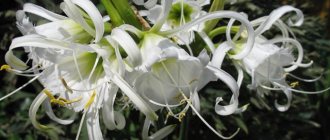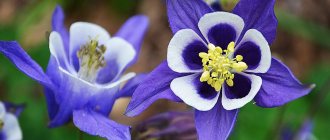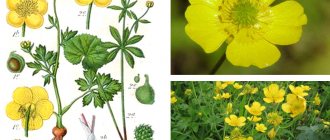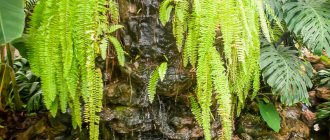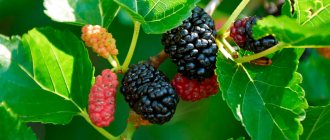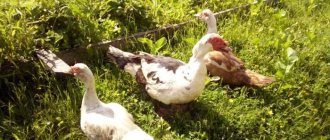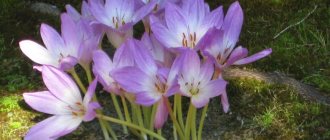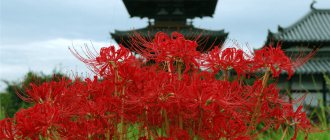The myrtle tree is an evergreen plant with a rich history. Perhaps most of all, it is known for its aroma. People have been making incense from myrtle leaves containing essential oils for centuries.
The myrtle tree is an evergreen plant with a rich history.
Myrtle is a very beautiful and fragrant plant.
The main condition for the successful growth of myrtle plants at home is proper care of these plants. It is also important to choose a variety that is optimally suited to the climate of your home.
Myrtle is a wonderful bonsai bush
Myrtle species
There are up to forty species of myrtle. In nature, this plant is distributed in the Mediterranean, northern Africa, western Asia, the Caribbean and the Azores. Popular home myrtles include Common Myrtle , Syzygium , Luma , Melaleuca , Metrosideros , etc. Indoor myrtles rarely reach one meter, although in nature these trees grow higher - up to five meters.
Common myrtle
Myrtle "Metrosideros" - a very beautiful view
Myrtle 'Luma' has beautiful white flowers.
Common myrtle is the most famous houseplant . The easiest variety to find on sale is Microphylla , a dwarf tree with small leaves. There are also large-leaved myrtles.
Myrtle bush "Microphylla"
Myrtle 'Melaleuca' flowers are simply stunning.
Myrtle "Syzygium"
Idea! The myrtle flower can be an excellent decoration for any dish. In the places where it grows, myrtle is actively used in cooking and for making drinks (Myrtle in Sardinia).
Liqueur "Myrtle in Sardinia"
Interesting with the light edging of the sheets is a variety like Variegata . Unusual double flowers distinguish the Flore Pleno .
A distinctive feature of all varieties of the Syzygium is the opposing position of the leaves.
Myrtle "Variegata" has a leaf with a light edge
Common myrtle "David Mason"
Myrtle "Flore Pleno" with double flowers
The “highlight” of the Luma is several trunks with orange peeling bark.
Myrtle trunks "Luma" with peeling bark
Melaleuca species is made famous by the variety Melaleuca alternate-leaved , the leaves of which are a source of tea oil.
Myrtle leaves "Melaleuca alternate foliage" are a source of tea oil
If you like bright flowers Metrosideros varieties are what you need. These shrubby and vine-like indoor crape myrtles have flowers in varying shades of red , yellow and orange.
Myrtle 'Metrosideros' with showy red flowers
Advice! Due to its medicinal properties, myrtle is a suitable plant for a child's room . The air in the room will always be fresh, and the light pleasant aroma will not harm the baby.
Application in medicine
In alternative medicine, the beneficial healing properties of myrtle have been known since ancient times and are used quite widely. Thanks to the presence of a large amount of essential oil and other useful components, myrtle has gained fame as an excellent healer. Myrtle oil is widely used throughout the world and is used in many areas of medicine. Decoctions, inhalations, lotions and tinctures of myrtle are useful for various ailments, prevention and prevention of diseases and inflammation of the female genital, genitourinary, digestive and respiratory systems. You can make decoctions, infusions and tinctures from indoor myrtle at home. It is better to buy essential oil in pharmacies.
Medicinal and beneficial properties of myrtle
Preparations based on the plant (myrtle oil, tincture, decoction) provide:
- astringent;
- wound healing;
- hemostatic;
- antitumor;
- antitoxic;
- anti-inflammatory;
- painkiller;
- and antiviral effect.
The healing properties of myrtle are used for inflammatory diseases of the digestive system (gastritis, ulcers, colic), since preparations based on myrtle have an astringent, anti-inflammatory, and analgesic effect.
Myrtle oil, as an infusion for external and internal use, is excellent for various seasonal viral and cold diseases. If you have a sore throat, runny nose, sore throat, or flu, it is good to be near the plant, since by releasing phytoncides, myrtle destroys pathogenic microbes, increasing immunity and overall body resistance. When you have a cold, it is useful to chew a couple of myrtle leaves several times a day, this will strengthen your immune system and help you cope with the disease faster.
The calming and analgesic properties of myrtle essential oil for headaches and migraines are very effective.
The plant can be classified as a natural antibiotic, since it contains myrtilin. Myrtle has powerful antibacterial, antiviral and immunostimulating effects.
Contraindications
Unique in its healing properties, myrtle has a number of contraindications. Preparations based on it are not recommended for use during pregnancy, during breastfeeding, with individual intolerance to the components of the oil, as well as for elderly people.
When planning the location of a flower in an apartment, it is highly recommended not to place a flower pot at the head of the bed. The plant can cause sleep disturbances.
Transplanting myrtle
Mature trees do not require frequent replanting (it is enough to do this once every 3-4 years). Young myrtle needs to be replanted as it grows (once a year, preferably in winter).
Myrtle will perfectly decorate your landscape
The soil in the pot needs to be dried, refusing to water the plant for some time, after which we proceed to replanting:
- 1. Turn the pot over and pull out the soil with the flower.
- 2. We treat the roots with some disinfecting stimulant (for example, a mixture of heteroauxin with twenty-five percent ascorbic acid).
Myrtle roots
- 3. Pour expanded clay and drainage into the pot. Then we fill the bottom with a substrate consisting of peat soil (30%), river sand (20%), humus (20%) and turf soil (30%). This composition is good for both transplanting and planting myrtles.
- 4. Install and secure the plant in the container.
- 5. Pour water at room temperature and take it to a dark place.
Young myrtle needs to be replanted as it grows
Reproduction
Myrtle is propagated by seeds and cuttings.
The seeds are placed in shallow holes in a mixture consisting of peat and sand (half and half), sprinkled a little on top. The soil with seeds is kept at a temperature of 18-20 degrees. It should be slightly damp at all times. To achieve the greenhouse effect, you can use glass or film. Remember that you need to lift them once a day to aerate the soil.
Advice! It will not hurt to water the seed substrate with a fungicide.
Myrtle is in great demand among flower lovers
The seedlings are replanted after the appearance of two full leaves, using the same mixture of turf and leaf soil mixed with sand and humus, which was discussed above.
Transshipment occurs when a lump of earth is entwined with roots. It takes about 5 years to wait for myrtle grown from seeds to bloom.
In the second case, the algorithm of actions is as follows:
The flowering of myrtle is a very beautiful phenomenon
- Cutting off a shoot from an adult flower. It is usually produced in mid-late spring. The cut site is treated with a growth stimulator.
- Cleaning the branch from the lower leaves (about 3 cm).
- Planting in a low container filled with sand and leaf soil (or sphagnum).
Myrtle was a symbol of youth and beauty among many ancient peoples
Advice! It is better to cover the cutting with a glass jar until roots appear on the shoot (usually this happens on the 20-30th day).
- Planting in a pot. A container with a diameter of 7 cm is suitable. To prepare the soil, use the substrate described in the previous section.
- Trimming the top of a mature myrtle. Pruning is carried out to form side branches.
Myrtle will bloom 3-4 years after planting the cutting.
Crown formation
The formation of the myrtle crown is divided into two types: pinching and pruning. Pinching young shoots can be done at any time. This will increase the density of the crown, but the number of flowers on the tree will decrease.
Trimming the shoots allows you to give the plant the desired shape. If crown formation is not carried out, the crown will eventually acquire a pyramidal shape. When the top is cut off, the plant turns into a shrub. A very small plant must be given time to strengthen before forming a crown by pruning.
Pruning can be done in the spring, but then you are unlikely to see flowering this year. It is better to prune shoots after flowering, in autumn or winter. Typically, branches are cut to 1/3 of their length.
This may be interesting: Classification of peperomia species
Bonsai
Myrtle is well suited for growing bonsai. The bends of the trunk and branches are formed using thin rigid wire, guy wires, and the crown is formed by cutting and removing leaves from the bottom of the branches.
Watering and moistening
Myrtles love moisture. This leads to the fact that even during the heating season the plant is not allowed to dry out more than the top two centimeters of soil. In summer, they do not wait for drying, abundantly supplying the flower with moisture, the remainder of which must be drained from the tray.
In addition to watering the soil, spraying will be beneficial for myrtle. This is especially important when, in the warm season, the pot with the plant is taken out onto the balcony or terrace .
Advice! If you inadvertently forgot to water your myrtle, causing it to dry out, briefly put the pot in water so that moisture passes through its lower holes to the roots of the flower.
In addition to watering the soil, spraying will be beneficial for myrtle.
sunlight
The flower loves the sun, and may even be under its direct rays. However, it is better to hide it from excessively bright light during the midday heat.
The best option would be to place the plant near an east or west window. The lack of sunlight will affect the number of flowers - there will be fewer of them than expected.
Lack of sunlight can affect the number of flowers
Diseases and treatment
When growing myrtle, you should be wary of parasites such as aphids, spider mites, scale insects, thrips, whiteflies, and mealybugs. You can get rid of them by purchasing insecticides, which must be used strictly according to the instructions.
Currently, myrtle is widely used for cosmetic and medicinal purposes.
Some changes in the appearance of the flower may be symptoms of improper care. Small pale leaves indicate a lack of light, while yellow and curled leaves indicate an excess of light.
When the irrigation system is disrupted, the myrtle sheds its leaves. To bring the tree back to life, the shoots are shortened by half and provided with normal watering.
Fallen leaves in winter may indicate that the temperature in the room is too high. Move the myrtle to a cooler room and the problem will be solved.
Myrtle wreaths crowned the heads of poets and victors among the Greeks and Romans
Pests
Myrtle becomes vulnerable to pests if conditions are violated. The table provides a list of the main pests and diseases and measures to combat them.
| Signs | Cause | Treatment |
| Dark spots on leaves, sticky coating. | Defeat by scale insects | Removing scale insects with a swab moistened with soapy water. Then treat with an insecticide. |
| Myrtle leaves dry and curl | Aphid | Insecticide treatment. |
| The appearance of a whitish web on the underside. | Spider mite | Washing with soap or tobacco solution, treating with insecticide. |
| White fluff-like coating on leaves and twigs. | Mealybug | Remove pests mechanically, then treat with Aktara according to the instructions. |
| They form light spots on the upper side of the leaf and dark spots on the bottom. | Thrips | Treat with Actellik. |
| Myrtle dries out and develops poorly | Root rot | Inspect the root system, remove diseased roots. Replant into new soil. |
Although growing myrtle requires almost daily attention, especially in summer, the result will please you not only with its appearance, but also with the creation of a family-friendly atmosphere.

